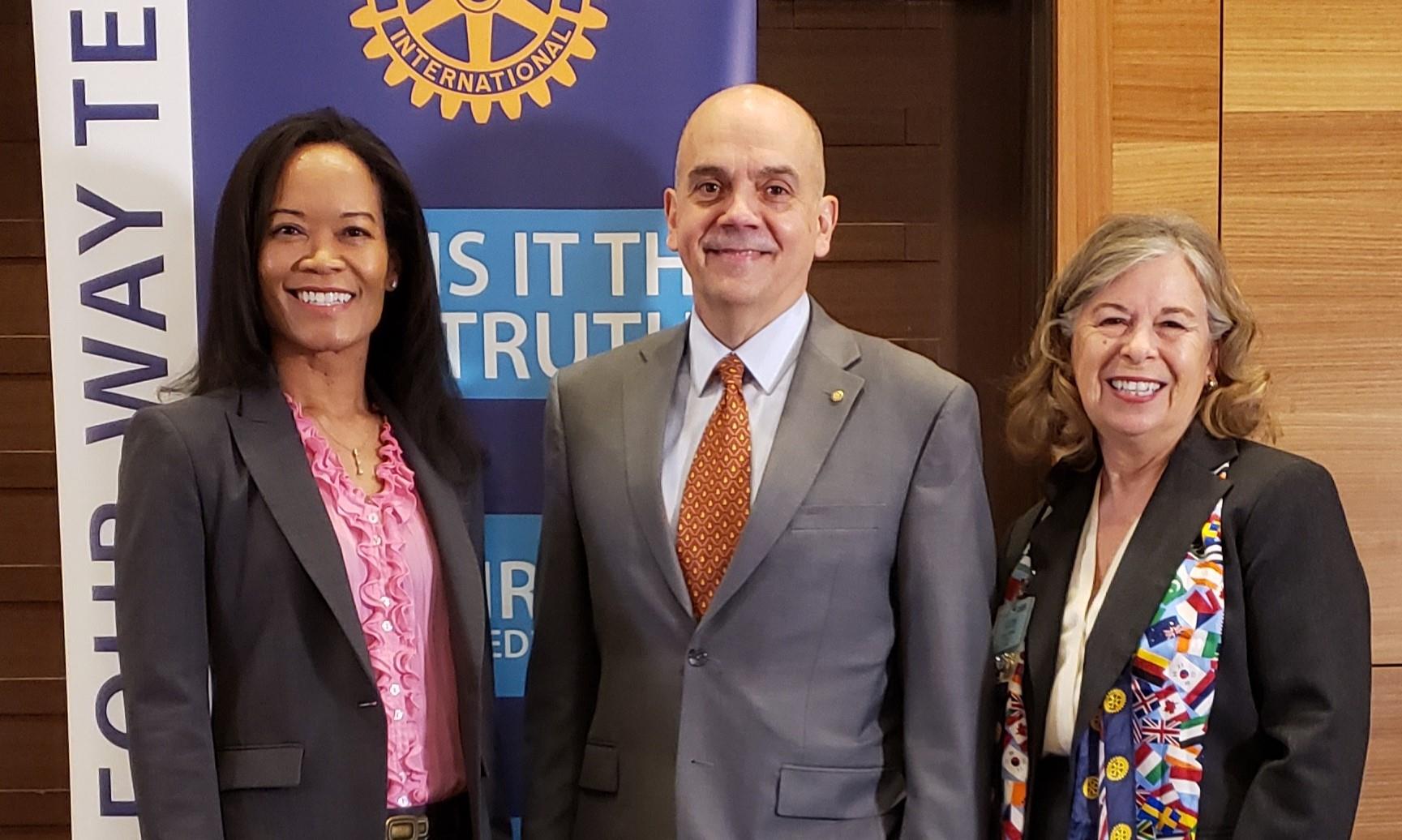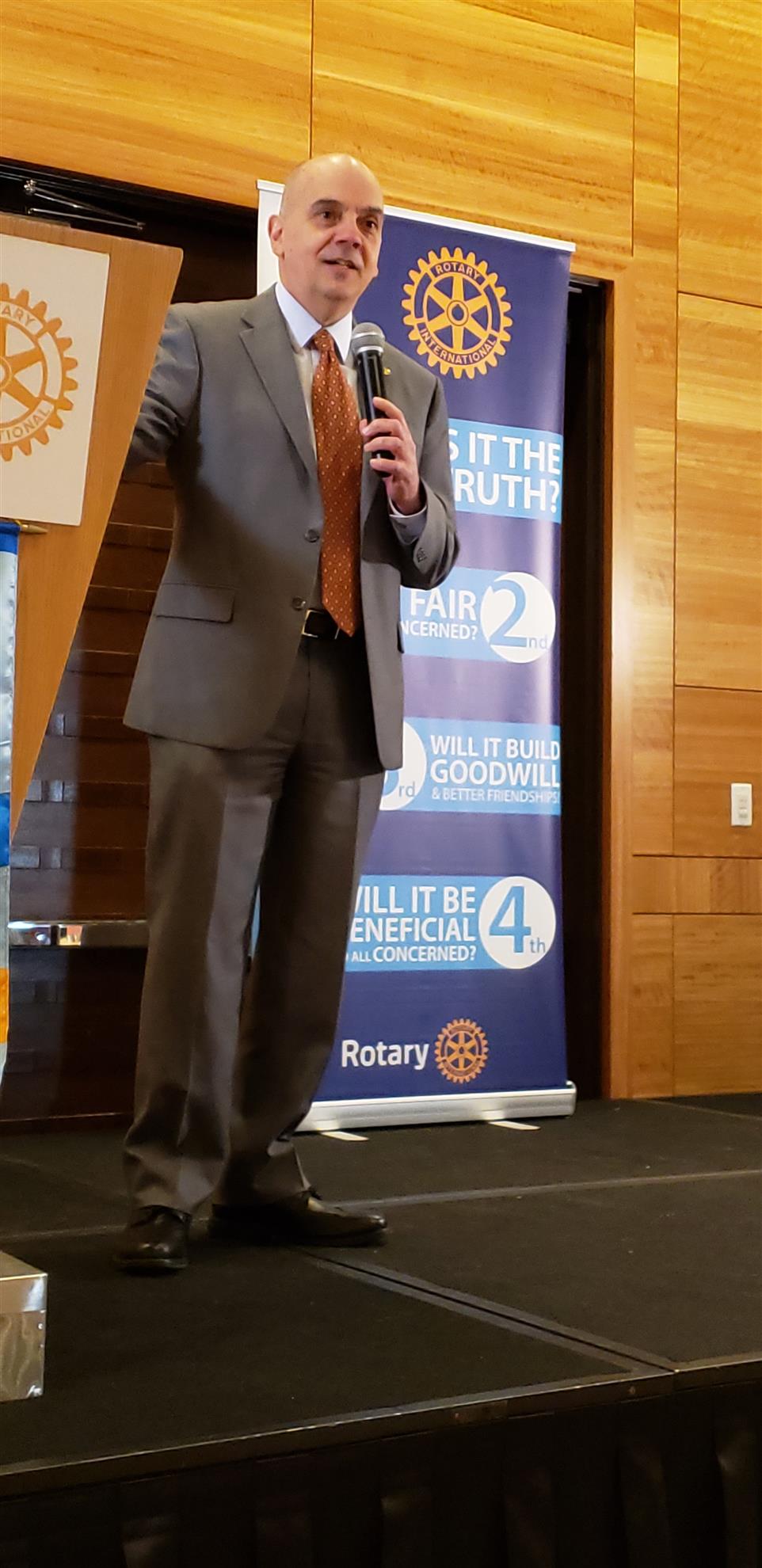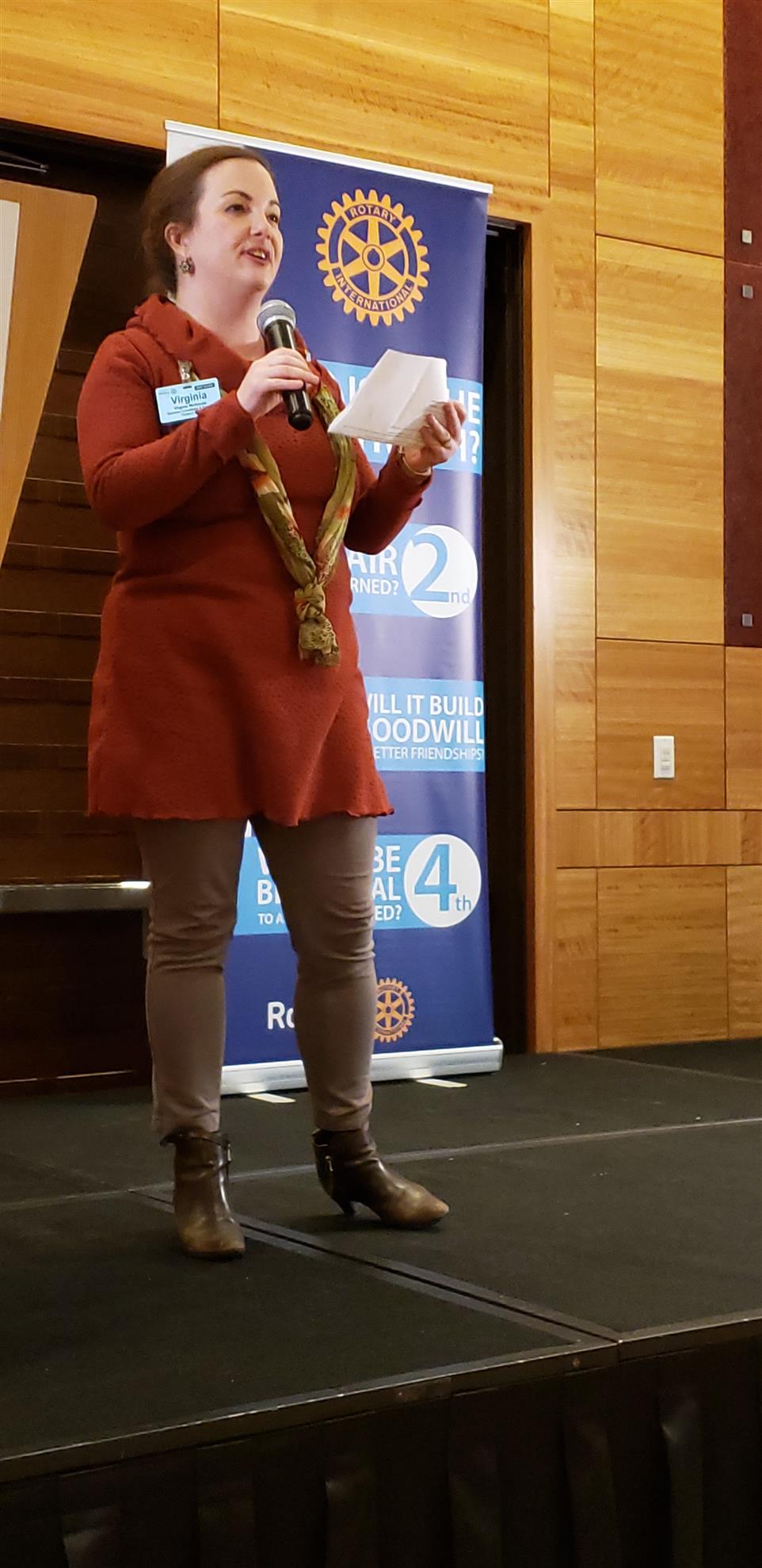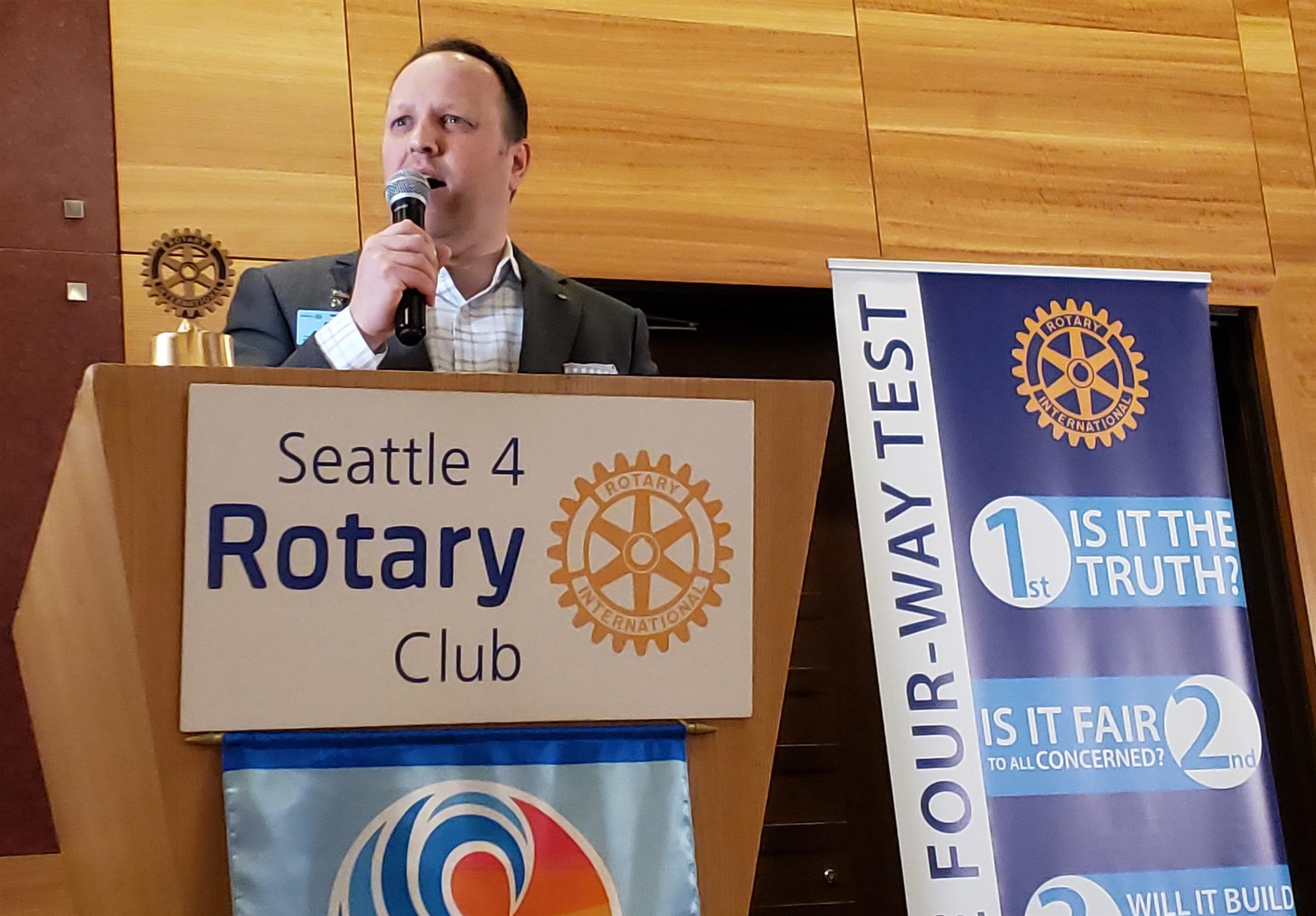 Alejandro Grajal, CEO and president of Seattle's Woodland Park Zoo, first fell in love with zoos as a toddler. A visit to the Madrid Zoo with his mother set him on his life path of science, including a stop on Jacques Coustou's Calypso as a biologist and earning a Ph.D. in zoology at the University of Florida before coming here. Alejandro came to Seattle three years ago drawn here, he explained, by the unbeatable combination of the Woodland Park Zoo's international reputation for zoo innovation and its emphasis on conservation.
Alejandro Grajal, CEO and president of Seattle's Woodland Park Zoo, first fell in love with zoos as a toddler. A visit to the Madrid Zoo with his mother set him on his life path of science, including a stop on Jacques Coustou's Calypso as a biologist and earning a Ph.D. in zoology at the University of Florida before coming here. Alejandro came to Seattle three years ago drawn here, he explained, by the unbeatable combination of the Woodland Park Zoo's international reputation for zoo innovation and its emphasis on conservation. Calling the zoo an oasis in one of the fastest growing metropolitan areas in the United States, Alejandro showed us an aerial view of the zoo and its amazing surrounding green space. The in-city zoo and its grounds, one of the largest cultural institutions in the Pacific Northwest, are appreciated by all segments of society. Thirty-six thousand households hold yearly zoo memberships, Woodland Park Zoo has over 250,000 followers on social media, and the zoo hosts 1.4 million visitors a year - more than half of whom are millennials.
Calling the zoo an oasis in one of the fastest growing metropolitan areas in the United States, Alejandro showed us an aerial view of the zoo and its amazing surrounding green space. The in-city zoo and its grounds, one of the largest cultural institutions in the Pacific Northwest, are appreciated by all segments of society. Thirty-six thousand households hold yearly zoo memberships, Woodland Park Zoo has over 250,000 followers on social media, and the zoo hosts 1.4 million visitors a year - more than half of whom are millennials. Those impressive numbers do not satisfy Alejandro who has made increased access to WPZ by previously underserved populations one of his priorities. He has begun a variety of programs designed to encourage new visitors including coordinating with 600 social service agencies to bring people for the Christmas Zoo Lights, distributing over 100,000 free entrance tickets through the agencies, instituting $5 tickets for W.I.C. food recipients, and partnering with Seattle Public Libraries so 20,000 library card holders could visit the zoo for free. The zoo has instituted a program with the special needs community paving the way for that community to volunteer at the zoo.
Another focus of Dr. Grajal is to encourage innovation at the Woodland Park Zoo and he cited the amazing cooperation of our area's high tech community. As an example, Dr. Grajal discussed the use of camera traps in remote areas to research animals, their populations and habits. The advent of digital cameras, each able to hold 12,000 images, overwhelmed the zoo's staff - a problem Dr. Grajal identified as "too many pictures, too few biologists." Enter young and tech-savvy Manoj from Bellevue who developed a program that can differentiate between pictures of wolverines, cougars and, yes, even squirrels. In partnership with our Rotary and supported by an SRSF grant, this technology was shared with biologists in Papua New Guinea.
 A third and equally important focus of Dr. Grahal's vision is to enact a new mission - that is, to use the zoo as a giant megaphone to encourage and nurture active conservationists. He wants to use the zoo to actively allow visitors, especially children, opportunities to experience emotional connections with animals and nature. Experiencing empathy for animals, even if short in duration, can produce a deep emotional relationship. It is those emotional ties that drive humans to actions and careers designed to conserve our planet.
A third and equally important focus of Dr. Grahal's vision is to enact a new mission - that is, to use the zoo as a giant megaphone to encourage and nurture active conservationists. He wants to use the zoo to actively allow visitors, especially children, opportunities to experience emotional connections with animals and nature. Experiencing empathy for animals, even if short in duration, can produce a deep emotional relationship. It is those emotional ties that drive humans to actions and careers designed to conserve our planet. Wrapping up, Dr. Grajal told us to expect an exciting new exhibit next year - a Pacific Northwest exhibit showcasing the unusual animals of our Northwest temperate rainforest. The exhibit will include elk, wolves, mountain goats and, sigh, banana slugs.
To begin our meeting, Kim Moore led us in Zip-a-dee-doo-dah, accompanied by Jevon Powell on the guitar. In anticipation of Dr. Alejandro Grajal, Nancy Cahill inspired us to cherish our natural resources and to care for our planet and quoted Ken Burns, John Muir, and Theodore Roosevelt.
 Jane Pryor introduced new member Paul Casey, classification Marketing and Public Relations. Nearly a Washington native, Paul grew up in Bellevue before attending WSU where he was elected student body president. After studying political science and communications, Paul put that degree to good use when he worked for Dan Evans and Sam Reed.
Jane Pryor introduced new member Paul Casey, classification Marketing and Public Relations. Nearly a Washington native, Paul grew up in Bellevue before attending WSU where he was elected student body president. After studying political science and communications, Paul put that degree to good use when he worked for Dan Evans and Sam Reed.Paul moved his communication skills to work in Seattle as public affairs director for Seattle Metro and, later, as executive director of the Alzheimer's Association of Western Washington. For many years Paul produced a newspaper and radio program, Voices of Experience, targeted to seniors. Since 1999, Paul's own consulting firm, Casey Communications, Inc., has worked with many large and corporate clients in the area.
 Paul met his wife, Marti, 21 years ago, cleverly employing Pete Delaunay and his sailboat as the excuse for their first date. It all worked out as Pete is his Rotary sponsor along with Doug Picha.
Paul met his wife, Marti, 21 years ago, cleverly employing Pete Delaunay and his sailboat as the excuse for their first date. It all worked out as Pete is his Rotary sponsor along with Doug Picha. Laurel James and Paul Heppner ably assisted on the Microphones.
